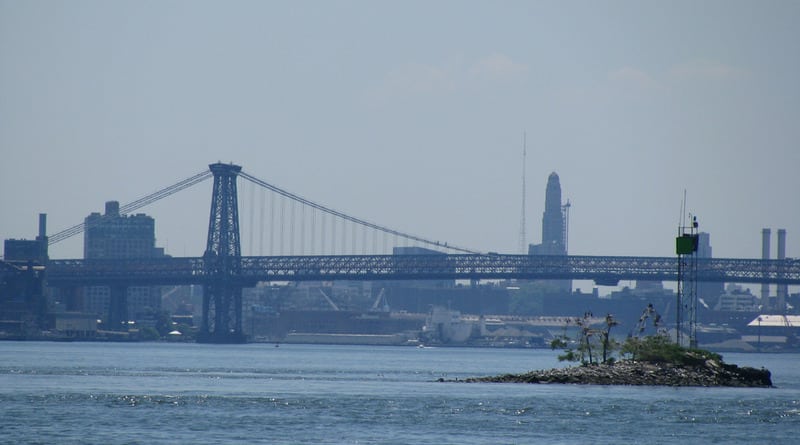
Even the indigenous people of new York know not all interesting and unusual places of the city. It seems the Big Apple will never reveal all its secrets.
There in the city and that virtually no human foot has ever stepped. One such place is the smallest island new York — U Thant — in the waters of the East river.

What is it?
A tiny (approximately 70 by 20 meters) artificial island belonging to the borough of Manhattan. Located between the headquarters of the United Nations on one shore of the East river and Long Island City on the other side. The island officially closed to visitors, as is a colony of rare birds – cormorants eared.
Where did he come from?
The official name of the island – Belmont. Until the late nineteenth century it simply does not exist. But in the 1890’s, William Steinway began the construction of a tunnel under the waters of the East river, to lay there the metro station. Soil from construction works were thrown into the water, and there was the island of Belmont.
Why is U Thant?
In the 1970-ies of the island, which was owned by the city, rented the followers of the Buddhist guru Sri Chinmoy and gave it the informal name in honor of the former Secretary-General of the United Nations, diplomat, U Thant. Conducted on the island of meditation, there are planted a lot of greens, but later even the followers of Chinmoy was allowed to visit the island only twice a year. And in 1990-ies and completely banned it. But the new name stuck.
The more famous U Thant?
The act of the artist Duke Riley. In 2004, the night he went with a friend on the island on the boat and U Thant declared… a sovereign state. Riley even mounted on the island 21-foot flag of the «state» depicting two electric eels in it. Later, the coast guard arrested «rulers Have a tan», but charges were not filed.
Now the island is still inhabited by only legally protected migratory birds.